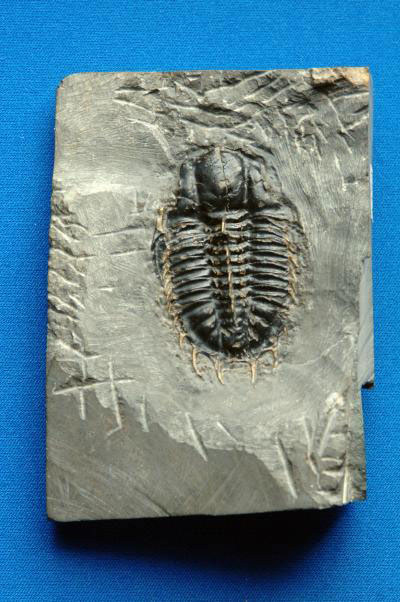Strange Sunspot Looks Like Prehistoric Trilobite

"We'venever seen anything quite like it," says solar physicist Lika Guhathakurtafrom NASA headquarters.
Last week shesat in an audience of nearly two hundred colleagues at the workshop in Boulder, Colorado, and watched in amazement as Saku Tsuneta of Japan played a movie ofsunspot 10926 breaking through the turbulent surface of the sun. Before theirvery eyes an object as big as a planet materialized, and no one was preparedfor the form it took.
"Itlooks like a prehistoric trilobite," said Marc De Rosa, a scientist fromLockheed Martin's Solar and Astrophysics Laboratory in Palo Alto, Calif. "To me it seemed more like cellular mitosis in which duplicated chromosomesself-assemble into two daughter cells," countered Guhathakurta.
"This movie is a magnetogram?a dynamic map tracingthe sunspot's intense magnetism," Guhathakurta explains. "Blackrepresents negative (S) polarity, and white represents positive (N)."
The data were gathered by the Japanese Space Agency'sHinode spacecraft, launched in Sept. 2006 on a mission to study sunspots andsolar storms. "This is the highest resolution magnetogram ever taken fromspace," says Tsuneta, Hinode's chief scientist at the NationalAstronomical Observatory of Japan in Tokyo. "It's showing us things we'venever seen before."
Magnetograms are the best way to study sunspots. Why?Although sunspots may appear solid and sturdy, they are not made of matter.Sunspots are planet-sized knots of magnetism created by the sun's inner dynamo.Born in the depths, they bob to the solar surface where they can shift, merge,split and even appear to "swim."
"Sometimes the shifting and merging gets out ofhand," says Guhathakurta. "Magnetic fields become unstable andexplode, producing a powerful solar flare." The effects are manifold:flares can disrupt communications on Earth, disable satellites, threatenastronauts with deadly radiation storms and (on the bright side) trigger lovelyaurora borealis--the Northern Lights. Although researchers have been studyingflares for more than a century, they still cannot issue accurate flareforecasts--something astronauts in orbit or en route to the Moon would dearlylove to have. Improving this situation is a key goal of the Hinode mission.
Get the Space.com Newsletter
Breaking space news, the latest updates on rocket launches, skywatching events and more!
Participants at the Living With A Star workshop wereamazed by the quality of Hinode's data. "The sensitivity of Hinode's SolarOptical Telescope is much higher than anything we've ever launched before. Thisallows Hinode to detect even the very faintest magnetic fields." Bywatching the ebb and flow of magnetism and the surprising forms that emerge,"we hope to understand the behavior of sunspots and predict theireruptions."
But first they've got to deal with the trilobites."We have a lot of work to do," says Guhathakurta. "But what awonderful problem."
- Video: Strange Sunspot
- Video: Beneath a Sunspot
- Image Gallery: Sun Storms
Join our Space Forums to keep talking space on the latest missions, night sky and more! And if you have a news tip, correction or comment, let us know at: community@space.com.
Tony Phillips is a professional astronomer and science writer who received a PhD from Cornell University in 1992. He is best known for his authorship of Spaceweather.com. In his career, he has worked as a radio astronomer at Caltech and published more than 100 articles in research journals such as Nature, the Astrophysical Journal, and the Journal of Geophysical Research. Among his astronomical interests are planetary and neutron star magnetospheres, radio storms on Jupiter and cosmic rays.









